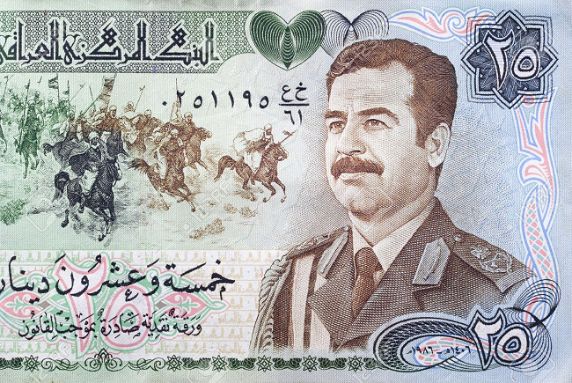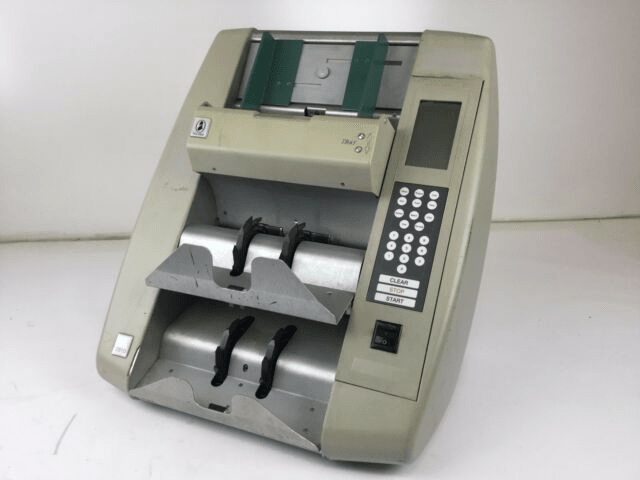Everything You Need to Know About the Iraqi Dinar
Over the last 20 years, it is hard to turn on the news without hearing stories about Iraq, often in conjunction with bombastic statements about the Iraqi dinar. U.S. involvement and media saturation has created images of chaos and destruction in most Americans’ minds.
However, Iraq is a country with a rich history and an emerging economy. Especially as Iraq recovers from the collateral damage of the Gulf War, they are growing once again. Rich oil reserves and the increasing demand for energy throughout the world give Iraq the hope of entering the global marketplace.
The dinar is the base currency of Iraq. This article will help you understand the basics of the currency along with a brief history of the region and explain why you often come across predictions regarding the revaluation of the dinar.
Today’s global political instability and economic volatility are two factors that are driving exchange rates for the Iraqi dinar, but Iraq has recently continued on a path of relative economic stability. This has helped strengthen the value of the Iraqi Dinar against the dollar since 2004, although there have again been signs of instability in the previous year.
But before we get to current developments, let’s understand the background.
History of Iraq
History in the land surrounding modern-day Iraq goes back to the beginning of recorded human history with the rise of the Sumerian people in 3500 BCE. Writing and the wheel were invented in the region. Here are some of the major highlights in Iraqi history over the past ~2500 years:
- Famous kings such as Gilgamesh, Sargon I, and Hammurabi ruled the area. During the 5th century BCE, the Babylonian empire arose under the leadership of Nebuchadnezzar and conquered much of the known world, becoming one of the first great worldwide empires.
- Eventually, the Babylonians were conquered under the Persian Cyrus the Great in 539 BCE, and the Greeks under Alexander took control until the Romans conquered in the 2nd century CE.
- In the 3rd century, the Sassanid empire ruled the area until Arab Muslims conquered the area in the 7th century. Baghdad is first established as the capital in 762 near the ancient city of Babylon and will remain the center of the Muslim world for nearly 500 years.
- In the 1200s the Mongols invaded and conquered, followed by the Ottoman Turks. The Turks dominated the land until WW1. Under the Turks, Iraq was divided into three main provinces, Mosul, Basra, and Baghdad.
- After WW1, the British occupied the territory and formed the modern state of Iraq. It remained under British control until it gained its independence in 1932 as a monarchy. The struggle between Iraq and Britain continues for many years due to the presence of oil.
- In 1958, the monarchy was overthrown and the Republic of Iraq is established. In 1968, the Baathist takes control, and in 1979 their candidate Sadaam Hussein becomes president of Iraq. During much of the 1980s, Iraq remained in conflict with Iran, their Persian neighbor, but the conflict officially ended in 1988.
- In 1991, the Gulf War began when Iraq invaded Kuwait. A complicated history between Sadaam Hussein continued throughout the ’90s and early 2000s until Sadaam was overthrown by a coalition of US-led troops in 2006.
- In 2010, a new Iraqi government was installed under the protection of the US-led coalition, and US troops officially left Iraq in 2011. Iraq has continued on a path toward stability and economic rebuilding after these many years of conflict and chaos, and is beginning to emerge as a viable economic power in the region.
Ready to sell?
Are you ready to sell your currency? Stop waiting and request a Shipping Kit. We will provide everything you need to ship and receive funds for currencies you own.
History of the Iraqi Dinar
The Iraqi Dinar was originally introduced in 1932, replacing the Indian Rupee. The Indian Rupee had been the country’s currency, was which enforced during the British occupation. This was simply an extension of the currency used in the British-controlled subcontinent of India.
During the original iteration of currency in the early 1930s, the government of Iraq issued dinars in denominations of ¼, ½, 1, 5, 10, and 100 dinars. In 1978, 25 dinar banknotes were issued. In 1991, 50 dinars were introduced and 100 dinars were reintroduced, followed in 1995 by 250 dinar notes and 10,000 dinar notes in 2002.
Banknotes issued between 1991 and 2003 bear the image of Sadaam Hussein on the currency. Following the 1991 Gulf War, the printing of the banknotes changed. Printing was done locally and in China. Unfortunately, the printing quality was poor. Banknotes were often of different colors and sizes due to fading inks and poorly cut paper. This brought in a wave of counterfeit bills. The counterfeit bills were often of better quality than the official banknotes.

Until 2002, the largest banknote was the 250 dinar. Due to the collapse of the Iraqi dinar in 2003 following the U.S. invasion, the Central Bank issued 10,000 dinars, but many people were afraid to carry them due to fears of counterfeiting.
Locals had to carry stacks of 250 notes to conduct business transactions. The currency printed prior to the Gulf War is often referred to as Swiss notes. This is not due to the printing origin but the printing technology that produced better quality notes. In 2004, coins were issued alongside banknotes in denominations of 25, 50, & 100 Dinar.
Currency Code/Symbol/Denominations
The currency code for Iraqi dinars is IQD, and the currency symbol is د.ع. The dinar is used as a currency term in many countries influenced by Islamic conquests. The word itself is derived from the coinage used under the Roman empire, the denarius. The value of the Iraqi Dinar is strongly tied to oil production and overall political stability.
The only denominations in circulation today are 250, 1,000, 5,000, 10,000, 25,000, and 50,000 notes.
Counterfeiting Protection
Authenticating IQD notes is often done by a De La Rue machine. These are the machines US First Exchange uses to validate all currencies we sell. Here are some ways you can spot fake dinars:
- Look for a security thread
- Bills should have raised letters
- Watermarks on each bill
- Metallic inks are used
- Authentic bills will glow under an ultraviolet light

De La Rue machine for counting and verifying Iraqi dinar.
Ultraviolet lights will reveal watermarks on the bills. The most common watermark used in Iraqi dinars is a horse head. Special pens found in most office supply stores can be used and will change color when marked on the bills. If you hold the 10,000, 25,000, and 50,000 bills in the light you will be able to check for the holograms embedded in the banknotes.
Iraqi Dinar Revaluation Predictions
You might have come here because you’ve heard that the Iraqi dinar will be revalued, as that is always a popular topic, so you wish to invest in it. This is always a possibility, but never trust any Iraqi dinar future predictions that state, with 100% certainty, that it will be revalued.
There are reports going as far back as 2011 of scammers enticing people with fake predictions and taking their hard-earned money. The problem was so pervasive that the Department of Financial Institutions of Washington State was forced to issue a statement regarding Iraqi dinar scams.
The latest example of a revaluation prediction that turned untrue was in 2020. Namely, the Iraqi Central Bank announced a 20% devaluation of the dinar in December of 2020. Consequently, people who were holding dinars hoping for an upward movement of the currency lost money.
To reiterate, a revaluation is always a possibility, but accurate Iraqi dinar future predictions are hard to make and you should be wary of any ‘expert’ that claims otherwise.
Trading Genuine Dinar Banknotes
There are several companies that trade in Iraqi dinars, but be careful which company you choose for buying or selling foreign currency online. If you're looking to buy or sell genuine Iraqi dinar banknotes, don't rely on your local bank as their spreads are too large, and they may not accept your Iraqi dinar without a high exchange fee.
And there is an additional problem - it can be hard to find notes as most currency exchange services and banks do not deal in this currency. The best online outlets will let you create an order for a range of exotic currencies, not just Iraqi dinar, and they'll ship them directly to your door with fully insured shipping and payment delivery.
At US First Exchange, we deal in a range of currencies, including exotic currencies like the Iraqi dinar and Vietnamese dong. You can order foreign currency online through our online platform and have your money shipped straight to your door in 24 - 48 hours. All shipments are fully insured, and we pride ourselves on having the industry’s lowest spreads.
Try our currency converter or sign up for our exchange rate alerts to keep track of your favorite currencies.
Ready to buy?
Are you ready to buy your currency? Stop waiting and request a Shipping Kit. We will provide everything you need to ship and receive funds for currencies you own.


